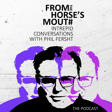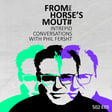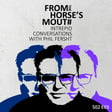
Episode 7. Publicis Sapient CEO Nigel Vaz: Redesign Your Operating Model Before AI Redesigns You
Redesign Your Operating Model — Before AI Redesigns You
with Nigel Vaz, CEO of Publicis Sapient and author of Digital Business Transformation
"What you don't want is faster caterpillars; you want real butterflies." — Nigel Vaz
What You'll Hear in 35 Minutes
- Why AI is a chain of "sequential watershed moments," not a single leap
- The S-P-E-E-D framework (Strategy, Product, Experience, Engineering, Data & AI) behind Publicis Sapient's transformations
- Tackling the $1.5 – $2 trillion technical-debt mountain and flipping the 80/20 "run vs. change" budget
- How Slingshot and Bodhi bring agentic AI + industry patterns into the SDLC to kill "spaghetti code"
- Moving from "tools" to a digital-workforce mindset (Iron-Man-in-the-suit analogy)
- Culture shift: learn → unlearn → relearn as an executive super-skill
Guest Snapshot
Nigel Vaz has spent 25 years at Publicis Sapient and became global CEO in 2019. His best-selling book, Digital Business Transformation: How Established Companies Sustain Competitive Advantage, introduces the SPEED model that Fortune 200 leaders still use to frame end-to-end digital change. Vaz now spearheads the firm's agentic-AI platforms Bodhi and Slingshot, aimed at collapsing delivery cycles and slashing tech debt for Global 2000 clients.
Timestamps
00:00 — Origins: from early internet banking to CEO
03:30 — "Sequential watershed moments" & the post-Turing era
06:11 — Technical debt: why $2 T blocks innovation
11:00 — Fear vs. action: only 15% of firms truly embracing AI
14:45 — Inside Slingshot: combine-harvester for the SDLC
20:45 — Services-as-software: blending people, products, outcomes
24:55 — Operating-model redesign & the Iron-Man analogy
29:15 — Governance moves from review boards to real-time guardrails
34:30 — Closing thoughts: learning > knowing in an agentic world
Resources & Links
Book – Digital Business Transformation → https://www.publicissapient.com/insights/dbt-book-preview
Sapient Slingshot overview → https://www.publicissapient.com/solutions/sapient-ai/sapient-slingshot
Bodhi agentic platform → https://www.publicissapient.com/solutions/bodhi
Follow Nigel on LinkedIn → https://uk.linkedin.com/in/nvaz
Follow Phil on LinkedIn → https://www.linkedin.com/in/pfersht/
Enjoyed the episode? Follow, rate ★★★★★ & review From the Horse's Mouth so we can keep the bold, practical AI-transformation talk coming to your feed.








